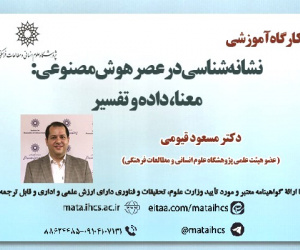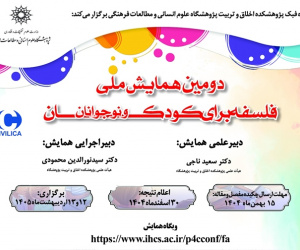شناسایی محرک ها و پیامدهای الگوی شهرخلاق در ایران (مقاله علمی وزارت علوم)
درجه علمی: نشریه علمی (وزارت علوم)
آرشیو
چکیده
الگوی شهرخلاق به عنوان رویکردی نوین در سیاست گذاری توسعه شهری، زمینه ساز ارتقای کیفیت زندگی، افزایش رقابت پذیری شهری و توسعه پایدار است. مطالعات متعددی به شناسایی شاخص های این الگو پرداخته اند، اما تفکیک این شاخص ها در دو دسته ی «محرک های شکل گیری الگو» و «پیامدهای ناشی از اجرای الگو»، نه تنها موجب درک عمیق تری از مفهوم شهر خلاق می شود، بلکه دستاوردهای نظری این حوزه را به راهبردهای اجرایی نزدیک تر می کند. پژوهش حاضر، با هدف تحلیل روابط علی و معلولی میان شاخص های کلیدی شهر خلاق در ایران انجام شده است. در گام نخست، با مرور نظام مند ادبیات جهانی، مؤلفه های کلیدی این الگو استخراج شدند و در گام بعد، با استفاده از شیوه DEMATEL فازی، میزان تأثیرگذاری این شاخص ها تحلیل گردید. یافته ها نشان داد که «صنایع فرهنگی و خلاق بومی»، «نگرش پذیرا و تنوع» و «حکمرانی دموکراتیک و فرهنگی»، نقشی اساسی در شکل گیری شهر خلاق در ایران دارند. درمقابل، شاخص های «درآمد خلاق شهری»، «برندسازی خلاق» و «اشتغال زایی خلاق» از پیامدهای اجرای این الگو محسوب می شوند. تفکیک شاخص های تأثیرگذار از موارد تأثیرپذیر، به مدیران شهری امکان می دهد تا به جای تمرکز بر حجم انبوهی از شاخص ها، بر عوامل اولویت دار در تحقق شهر خلاق تمرکز کنند. چنین رویکردی، ضمن بهینه سازی فرآیند تصمیم گیری، می تواند به تدوین راهبردهای عملیاتی هدفمند و کارآمدتر در راستای توسعه شهرهای خلاق منجر شود.Identifying the Drivers and Consequences of the Creative City Model in Iran*
The rapid process of urbanization worldwide has led to the emergence of challenges that have highlighted the need to change the paradigm in urban planning in today's era. The consensus of contemporary societies about the importance of native culture and art as drivers of development has made cities strive to realize the creative city model.This model, as a new form of urban development policy has gained special popularity among researchers and policy makers. In developing countries such as Iran, which face limitations in many aspects, it becomes more necessary to pay attention to such basic measures. Various theoretical researches in this field have also identified the characteristics of the creative city. The separation of this set of indicators, under two sections, "motivators of this model" and "consequences of the implementation of this model", will bring the theoretical achievements of this field closer to the implementation strategies. This study aims to distinguish the indicators of the creative city by classifying them into two categories: causal and resultant.For this purpose, first, through a review of the global literature, the main characteristics of the creative city model were identified. In the next step, using Fuzzy DEMATEL, the cause-effect situation of each of the indicators in the field of Iranian cities is investigated. The global literature of this field was examined and the state of reproducibility of the key characteristics raised in twenty recent studies and the global index is presented in tabular form. Next, the indicators were screened based on their effectiveness in the realization of creative city model, using the Fuzzy DEMATEL method.To this end,, 13 urban experts were selected by purposeful sampling to evaluate the impact of each creative city indicators on the others based on theirexpertise.Based on the global literature review, 28 indicators were identified for the creative city model, which were categorized under nine components and three dimensions. The indicators of receptive attitude and diversity, presence of creative human capital in the city, cultural and leisure spaces , and democratic and cultural governance appear most frequently in leading global studies, reflecting their critical importance to the creative city model..furthurmore, the indicators such as “unique native cultural and creative industries", "receptive attitude and diversity", "democratic and cultural government" and "encouraging and supportive policies", "social and cultural dynamics" and "relative ease of commuting to the city" are identified as requirements for implementing the creative city model.; On the other hand, "creative city income", "creative branding", "creative employment", "creative human capital presence" and "urban vitality and thriving street life" are considered the consequences of implementing the creative city model in Iranian cities.. In addition, attention to the dimension of the creative environment is very important for the implementation of the creative city model in Iranian cities. A significant number of characteristics within the dimension of cultural vitality and management infrastructure are expected to materialize following the implementation of the creative city model.Keywords:








